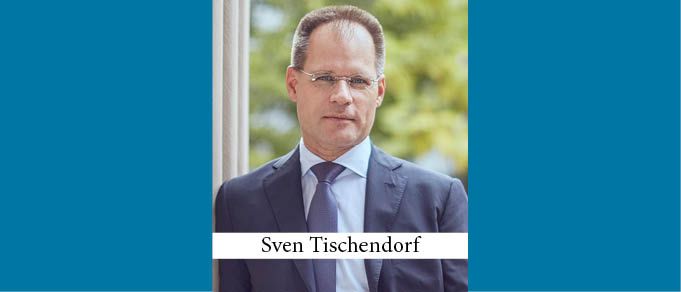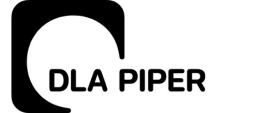On March 9, 2018, CEE Legal Matters reported on the expansion of the European act legal alliance with the addition of Hungary’s Ban Karika law firm and Fort Advocaten from the Netherlands. With the alliance now counting 13 offices in Europe – including five in CEE – CEE Legal Matters sat down with Sven Tischendorf of act legal Germany, AC Tischendorf Rechtsanwälte to learn more about the alliance’s plans.
CEELM: Tell us a bit about act legal – what was the rationale behind the alliance, and why did you focus on the initial jurisdictions that you did?
S.T.: The rationale behind act legal is multi-fold. At the end of the day it was/is the clear intention of the alliance’s initiating firms to create a new and unique market segment that is highly attractive for all relevant stakeholders: (1) For our existing clients, regarding business which is currently not assigned to us; (2) for new clients from the individual act legal countries; (3) for US and Asian law firms who want to refer business – but not to a potential competitor; (4) for general counsels, tax advisors, and CPA companies as well as international management consultancy firms who want to refer business – but formerly felt a “mental” barrier to doing so; and (5) for potential talent and external hires.
Act legal’s aspiration is to be counted among the top commercial law firms in Europe and to offer the performance profile of a major international law firm while, at the same time, benefiting from the efficient structures of a boutique. This clearly differentiates act legal from other relevant players on the legal market. The combination of (individual) sizes and reputations under a new (joint) strong brand has already clearly resulted in a marked increase of market awareness and visibility. Rankings of all act legal firms in Legal 500, Chambers, JUVE, etc. have improved, reflecting the newly acquired strength. All the alliance’s firms are facing an increased number of requests for proposals for both cross-border transactions and for one-stop shop solutions for day-to-day legal business for international clients. And indeed, the average client basis generated since the launch of act legal shows a comparably higher blue chip factor than before.
Unlike many of the local state-of-the-art firms, the significant international footprint and the significant increase of “firepower” which we have gained through our foundation in 2017 has let us become a credible competitor to the major international law firms.
Unlike from many of the major international law firms, clients of act legal firms can rely on efficient structures, senior counselling based on entrepreneurial competence and commercial understanding, and direct partner attention.
Within just a year since its incorporation we have managed to grow to 13 offices in 9 countries in the economic heart of Europe – Austria, the Czech Republic, France (operating also a Brussels office), Germany, Hungary, the Netherlands, Poland, and Slovakia – pooling around 300 first-class corporate and commercial legal professionals.
One of the strongest Spanish medium-sized firms will join on October 1, 2018, adding an office in Madrid with about 70 professionals.
Act legal has a clear roadmap. Geography and economy have determined the focus on the initial jurisdictions and are further determining its expansion. So, we have started in the heart of Europe with the clear intention to cover more or less all economically relevant countries in Europe within the next few years. The focus of act legal should be Europe, to be clearly distinctive and to build a strong marketing argument for clients, prospective clients, and foreign (in particular from the US and from Asia) law firms for referral work. Strong and effective support for clients outside of Europe is secured through a longstanding membership in one of the strongest international networks, which has around 60 prestigious law firms in all major business centers of the world.
CEELM: Can you describe the structure of the alliance? Is it a mandatory referral structure?
S.T.: The legal “constitution” is a Cooperation Agreement setting out all relevant principles of the Alliance, such as a unified trademark and market approach, the highest quality of service, joint budget, joint back-office, shared marketing, alignment of design and style, promotion of the alliance, conflict check, expansion, coordination of the Alliance, and so on.
The back-office functions and the IP (for example, the trademark) of act legal are operated/held through a joint legal entity in which each act legal firm holds an equal share.
Act legal sees itself as a highly integrated firm with a joint international market approach. In this kind of a structure, it is natural that the alliance’s firms in the various countries should always be preferred partners when clients require support abroad. But it is also natural that if in the interest of the client there are good reasons to ask outside firms for help, this is possible. Anything different would not be 100% professional – and we clearly stand for highest quality and 100% professionalism.
From the very beginning, we have set up the alliance quite professionally, with a powerful and dedicated Coordination Committee, a full-time Alliance Manager supported by a powerful back-office, regular all-partner meetings, various practice groups, interchanging of professionals, a unified brand, a common website (www.actlegal.com), joint marketing, joint pitching, to a large extent unified documentation (e.g. engagement letter, pitch documentation, power point master, stationaries, etc.) sharing of IT in terms of a common platform, joint social media tools and campaigns, constant exchange of ideas leading to adoption of best practices, synergies in purchasing, and so on.
CEELM: How are you integrated at this stage? Is formal integration expected down the road?
S.T.: Act legal was set up in two phases. Phase No. 1 is leaving member firms their individual styles and names – but connecting the various individual styles through an identifying brand and a unique design feature. Phase No. 2, which is expected to occur in the next two or three years, will align more things – however, the details will be agreed further down the road in line with certain principles already pre-agreed by all member firms in the Cooperation Agreement.
Due to the great success and acceptance of the act legal structure – and much earlier than originally envisaged – we are already somewhere between Phase No. 1 and Phase No. 2. However, legally, all member firms will continue to stay independent.
When clients approach act legal firms, they are already experiencing a highly integrated firm: a common website, an act legal engagement letter offering clients the choice of one bill or multiple billing, a unified brand, letterheads of the same style, very well-rehearsed cross-firm teams, one central “client partner,” cross-firm billing policies, cross-firm conflict checks, and very well-coordinated marketing and pitch approaches.
CEELM: How does management of the alliance work?
S.T.: Day-to-day affairs are run by the members of the Coordination Committee, the Alliance Manager, and her direct point of contacts within each act legal firm. Fundamental decisions are first discussed between the managing partners of all member firms and, if necessary, are then presented to the local partnerships for final decision. In addition, market activities/initiatives are regularly initiated by the various practice groups. In general, the management of act legal is very easy, business-oriented (with no politics), and efficient.
CEELM: We recently reported on the addition of a Hungarian and a Dutch firm into the alliance. Why these two jurisdictions in particular?
S.T.: Both jurisdictions clearly belong to the economic (and geographical) heart of Europe. So, it has been a kind of a “natural” evolution to add the well-known firms Ban Karika from Hungary and the Dutch Fort Advocaten. Due to the joint membership in the international legal network LAWorld most of the initiating firms had already successfully worked with Ban Karika for many years. With regard to Fort Advocaten the situation was different. Fort Advocaten had only once, but in a positive sense very memorably, cooperated in a challenging cross-border restructuring situation with AC Tischendorf, the German act legal firm. Following initial discussions with Fort Advocaten other act legal firms had sent up trial balloons with Fort Advocaten, leaving no doubt that it was in all respects a perfect fit for the alliance.
CEELM: How did you identify the firms to be included?
S.T.: We have set very high standards for act legal firms. They must be full-service commercial firms, highly modern and fully invested. They must be market leaders among the medium-sized business law firms in their respective home countries with a first-class reputation. Act legal firms should serve a demanding local and international corporate clientele, private equity investors, entrepreneurs, and alike. Head offices must be in international centers of commerce. And last, but not least: they must have strong international exposure and a considerable number of the partners should have gained professional experience with international corporate law firms.
A comparable setup of all members is one of the key success factors of any joint operation.
The initiating act legal firms from the Czech Republic (Randa Havel Legal), Germany (AC Tischendorf), Poland (BSWW), and Slovakia (MPH) had known each other and successfully worked together for many years through membership in the international LAWorld legal network. The Austrian firm (WMWP) and AC Tischendorf from Germany had come into contact in a different legal network, while the French/Belgium firm (Vivien & Associes) was one with which the members had no prior contact and was identified as a result of a careful due diligence on the French legal market.
As part of the admission process, all act legal firms have undergone a thorough review on business philosophy, personality of partners, client basis, range of services, quality of work, KPI’s, age structure of the professionals, office space, etc., combined with multiple meetings.
CEELM: The alliance now has 13 offices in Europe – but none in the United Kingdom. Why is that?
S.T.: There is no secret about it. As I mentioned earlier, we decided to build act legal from the economical and geographical heart of Europe to outer Europe. And we have not yet fully covered the heart of Europe – we would see, for example, Italy and Romania more as a priority. But of course, act legal is open to a UK firm if the time is right and a perfect fit is identified.
CEELM: Is there a further expansion on the horizon? What markets are you contemplating/exploring and why?
S.T.: Sure. As I mentioned before, a superb Spanish firm is joining on October 1, 2018. Italy would be key to cover and we are currently exploring the Italian market. The same is the case for Romania as one of the fastest-developing Central European countries with a larger population. Switzerland is surely interesting. And the Nordics are also in our focus. Now you are perfectly familiar with all our secret expansion plans.
This Article was originally published in Issue 5.8 of the CEE Legal Matters Magazine. If you would like to receive a hard copy of the magazine, you can subscribe here.




